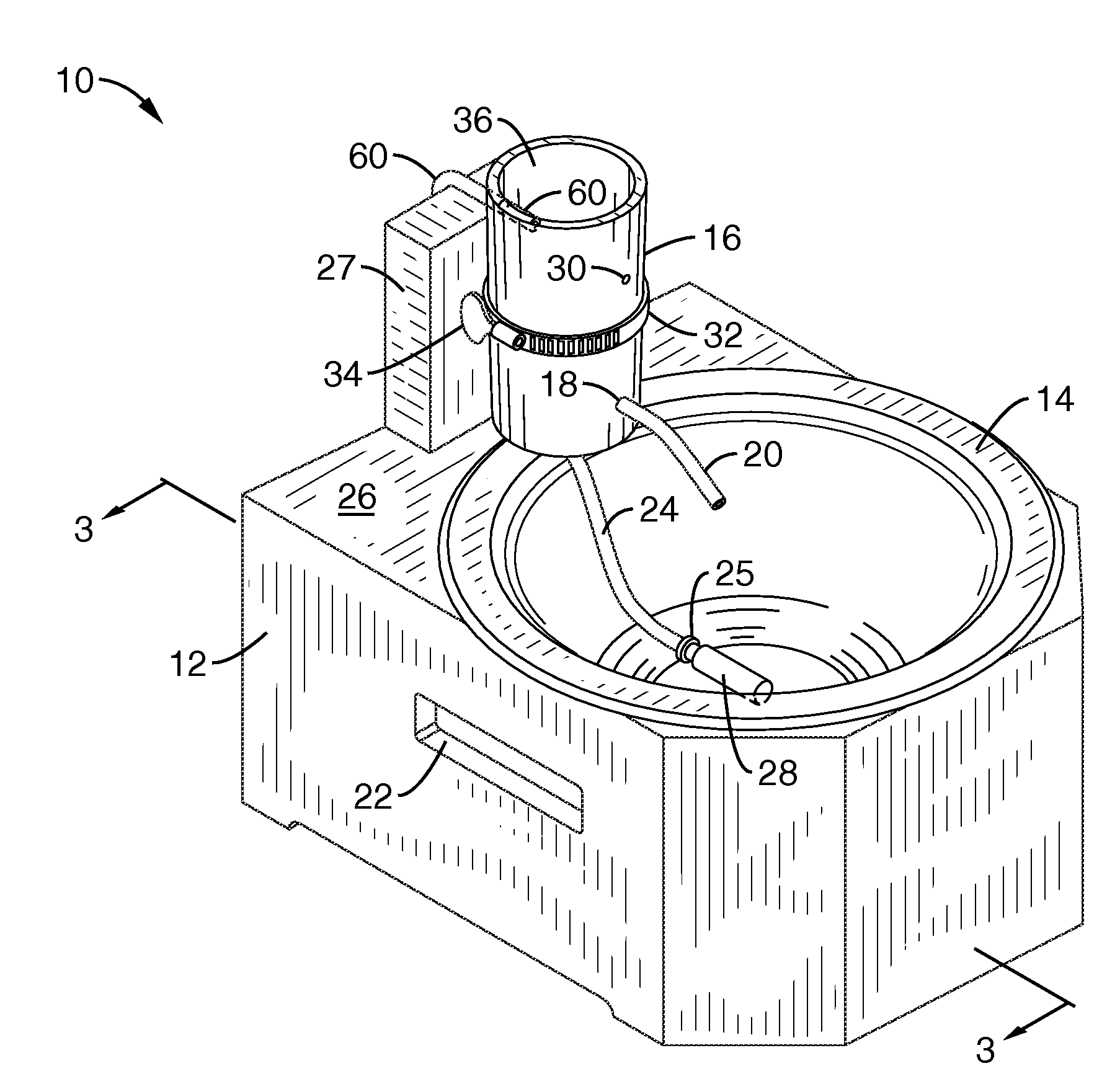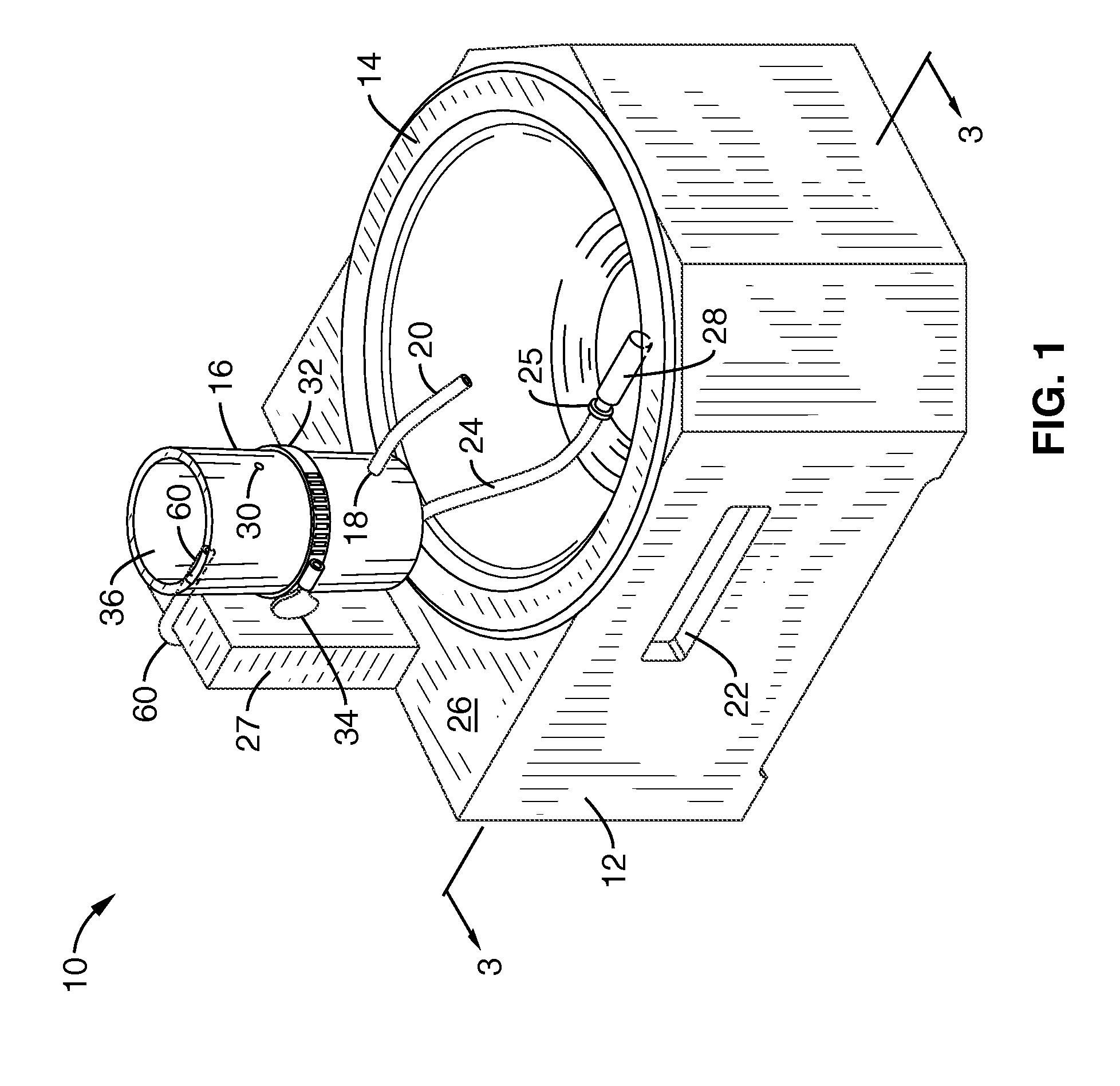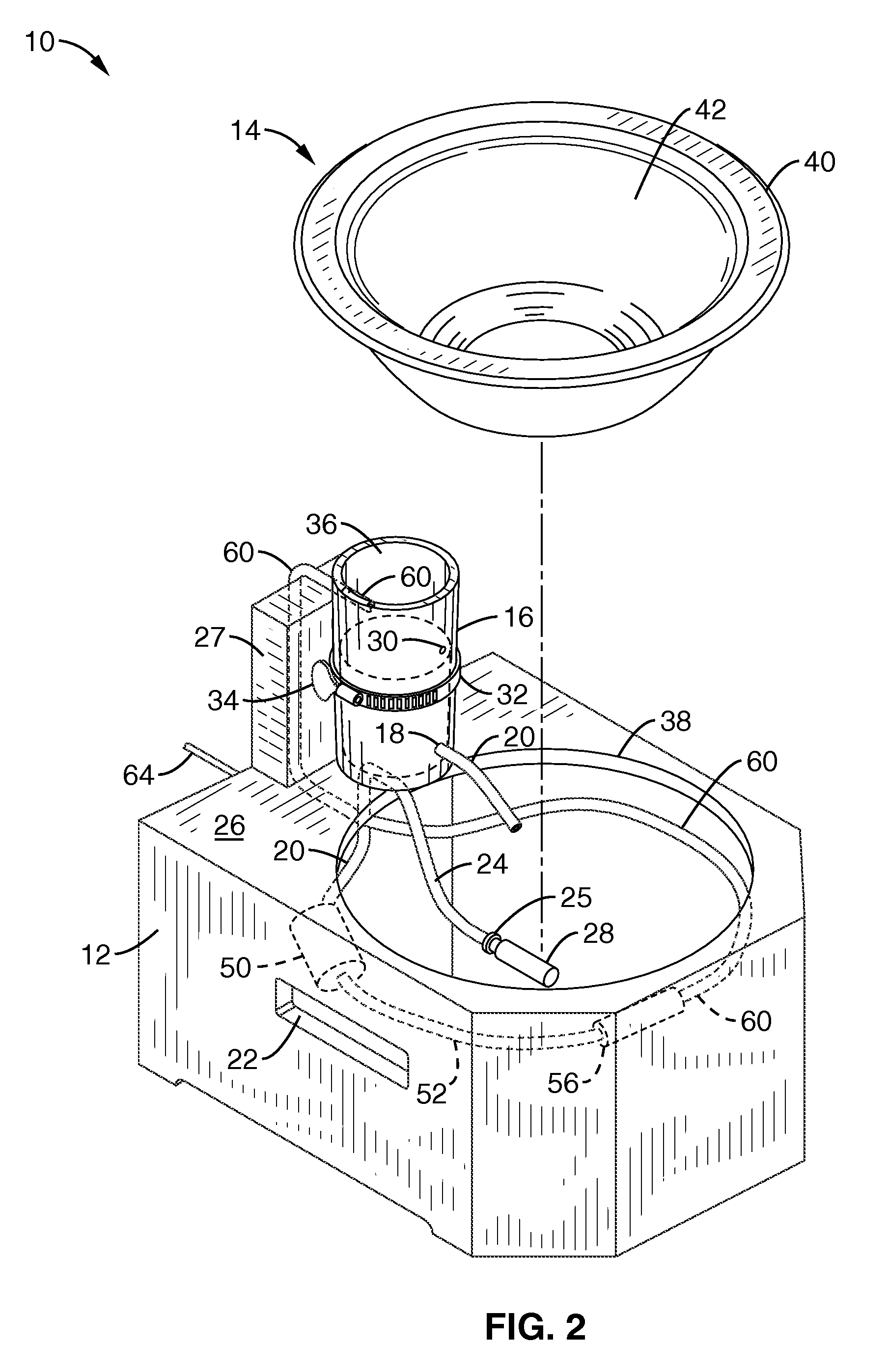Water dispenser for pets
a water dispenser and pet technology, applied in the field of water dispensers, can solve the problems of inability to remove contaminants and/or pathogens from pet drinking water, contamination and/or pathogens, and little has been done to encourage adequate hydration of the animal
- Summary
- Abstract
- Description
- Claims
- Application Information
AI Technical Summary
Benefits of technology
Problems solved by technology
Method used
Image
Examples
Embodiment Construction
[0052]Referring more specifically to the drawings, for illustrative purposes the present invention is embodied in the apparatus generally shown in FIG. 1 through FIG. 11. It will be appreciated that the apparatus may vary as to configuration and as to details of the parts, and that the method may vary as to the specific steps and sequence, without departing from the basic concepts as disclosed herein.
[0053]FIGS. 1-3 illustrate a pet watering system 10 in accordance with the present invention. Watering system 10 comprises a base or cabinet 12 that is configured to support a basin 14. The cabinet may be constructed of wood, plastic, or other polymer strong enough to support the weight of the basin 14 and water. As shown in FIG. 1, the basin 14 is generally a bowl-shaped receptacle configured to retain a volume of water for consumption by an animal or pet. The basin 14 comprises a symmetric shape and large opening that facilitates cleaning and evaporative cooling.
[0054]Referring to FIG...
PUM
 Login to View More
Login to View More Abstract
Description
Claims
Application Information
 Login to View More
Login to View More - R&D
- Intellectual Property
- Life Sciences
- Materials
- Tech Scout
- Unparalleled Data Quality
- Higher Quality Content
- 60% Fewer Hallucinations
Browse by: Latest US Patents, China's latest patents, Technical Efficacy Thesaurus, Application Domain, Technology Topic, Popular Technical Reports.
© 2025 PatSnap. All rights reserved.Legal|Privacy policy|Modern Slavery Act Transparency Statement|Sitemap|About US| Contact US: help@patsnap.com



